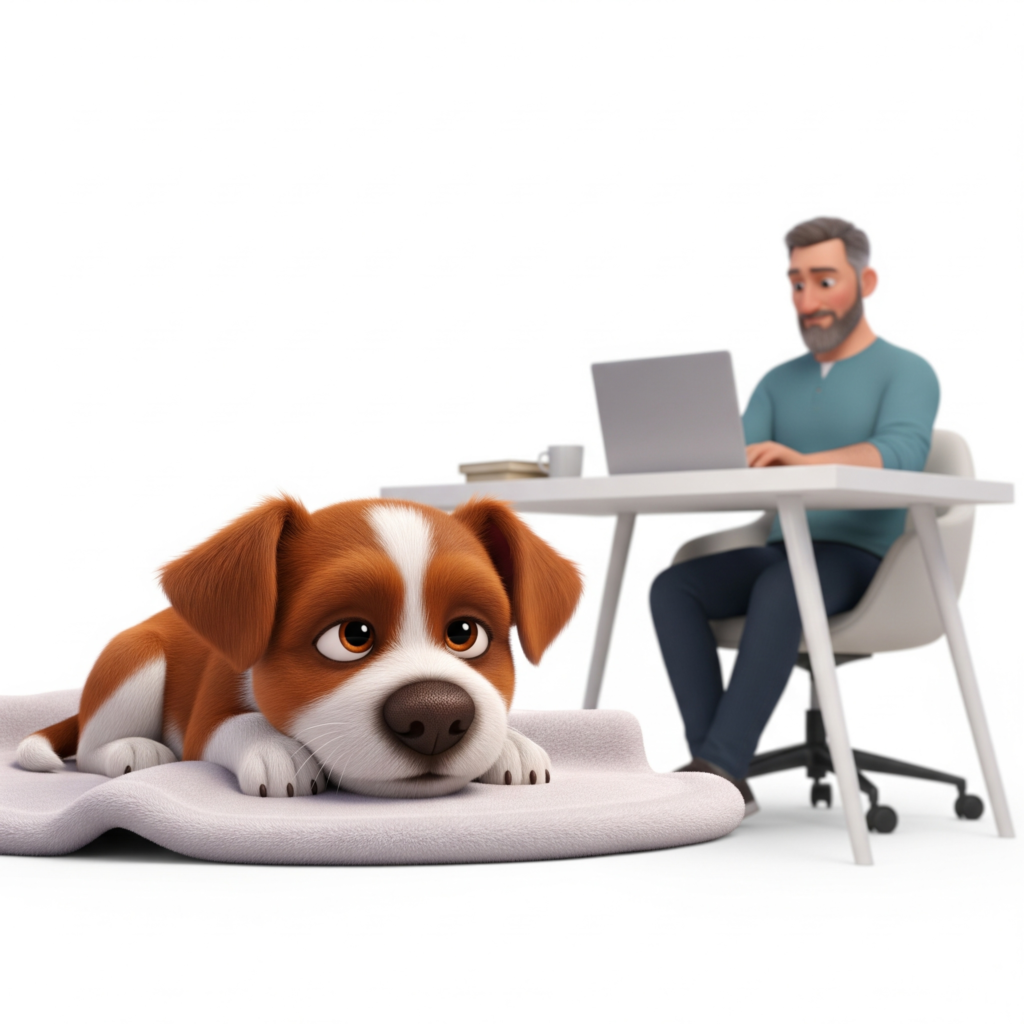
Working from home with a young puppy can be both a blessing and a challenge. While you have more time to bond, balancing your work responsibilities with your puppy’s needs requires structure, patience, and the right setup. With a few simple strategies, you can create an environment that supports both productivity and puppy calmness.
Set a Predictable Daily Routine
Puppies thrive on consistency. Start each day at the same time with a walk, play session, or short training routine before you begin work. If your puppy knows when to expect attention and activity, they’re more likely to settle when it’s time for you to focus on your tasks.
Designate a Calm Puppy Zone
Create a safe and comfortable space where your puppy can rest while you work. This could be a crate, a soft dog bed in your office, or a quiet corner with familiar toys. Make sure the area is away from distractions like the front door or noisy hallways. Include a chew toy or a food-stuffed puzzle to keep your puppy occupied.
Use Mental Enrichment to Tire Them Out
Physical activity is important, but mental stimulation is just as effective at calming a young dog. Rotate interactive toys, introduce safe chew items, and provide simple problem-solving games. These activities satisfy your puppy’s need to stay engaged and help reduce restlessness.
Plan Breaks for Exercise and Potty Time
Structure your day with short breaks where you can step away from the screen and give your puppy some attention. A quick five-minute play session, a bathroom break, or a short walk can reset both of you. Puppies have small bladders and short attention spans, so brief, consistent breaks work best.
Practice Independent Time Gradually
Teach your puppy that it’s okay to be alone—even if you’re in the next room. Start by leaving them in their designated area for short periods while you stay nearby. Gradually increase the time and distance until they become comfortable relaxing without constant attention.
Minimize Overstimulation
Keep the working environment calm by reducing loud noises and visual distractions. If your puppy reacts to deliveries, passing cars, or neighborhood sounds, consider using white noise or soft music. You can also use baby gates to create separation without closing doors completely.
Reward Calm Behavior
Whenever your puppy is quietly lying down, chewing calmly, or entertaining themselves appropriately, reward them with a soft word of praise or a small treat. This helps reinforce calm behavior and teaches them that being relaxed leads to positive outcomes.
Avoid Excessive Attention During Work Hours
It can be tempting to give in to whining or constant nudging for attention. But if your puppy learns that fussing earns your focus, the behavior will continue. Stay consistent with your boundaries, and redirect gently with a toy or a short timeout before resuming your work.
End the Day with Focused Time Together
Once your workday is done, transition into quality bonding time. Take your puppy for a walk, engage in a play session, or review basic training cues. This reinforces that there’s dedicated time for them and reduces feelings of neglect or boredom.
Why It Matters
Balancing a remote work schedule with puppy care can be rewarding when approached with structure and intention. By giving your puppy a dependable routine, teaching independence, and using positive reinforcement, you create a peaceful home environment that works for both of you.
Whether you’re managing meetings or writing emails, knowing your puppy is calm and content nearby makes the day smoother. A well-adjusted puppy is not just easier to live with—they grow into confident, secure adult dogs, thanks to the foundation you build today. PetsDogPuppy
